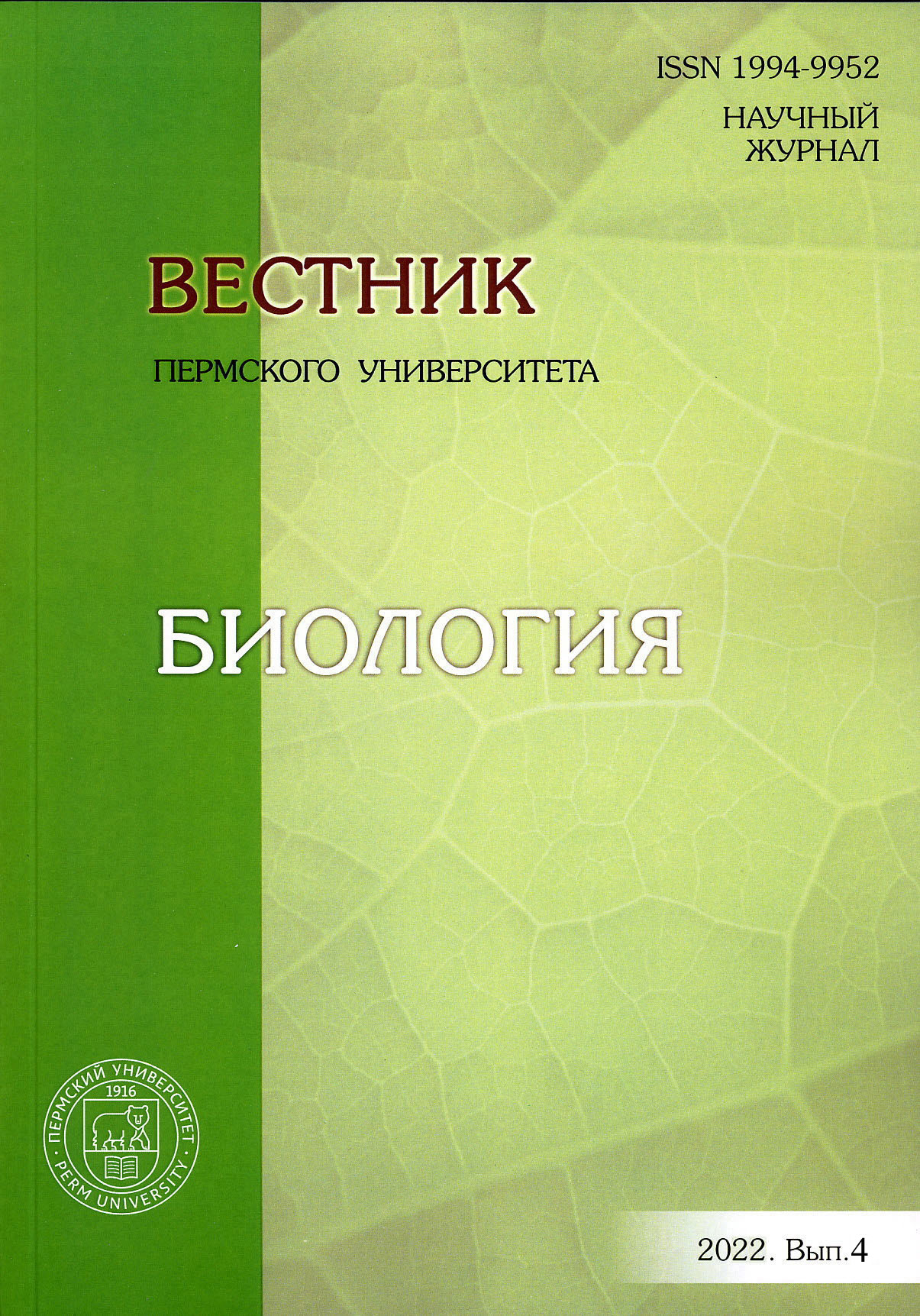The effect of haloperidol on the formation of behavioral patterns in adult rats
Main Article Content
Abstract
Article Details
References
Drozdov A.L., Demchenko E.M., Ejjyad A., Nerush O.P. [Influence of psychotropic drugs on spontaneous behavioral activity of albino rats]. Visnyk of Dnipropetrovsk University. Biology. Medicine. V. 1, No 2 (2011): pp. 47-53. (In Russ.).
Zvezdochkina N.V., Muranova L.N., Andrianov V.V., Arkhipova S.S., Gainutdinov Kh.L., Golubev A.I., Pleshchinskii I.N. [Locomotor reactions and excitability of neurons during the blockade of dopamine by halope-ridol in vertebrate and invertebrate animals]. Rossijskij fiziologičeskij žurnal imeni I.M. Sečenova. Vol. 90, No 11 (2004): pp. 1381-1392. (In Russ.). DOI: 90(11):1381-92.
Sysoev Yu.I., Prikhodko V.A., Idiyatullin R.D., Chernyakov, R.T., Karev V.E., Okovitiy S.V. [A Method for Chronic Registration of Brain Cortical Electrical Activity in Rats]. Rossijskij fiziologičeskij žurnal imeni I.M. Sečenova. Vol. 108, No 2 (2022): pp. 279-290. (In Russ.).
Amtage J., Schmidt W.J. Context-dependent catalepsy intensification is due to classical conditioning and sensitization. Behavioural pharmacology. Vol. 14, No 7 (2003): pp. 563-567. DOI: 10.1097/00008877-200311000-00009.
Carola V., D'Olimpio F., Brunamonti E., Mangia F., Renzi P. Evaluation of the elevated plus-maze and open-field tests for the assessment of anxiety-related behaviour in inbred mice. Behavioural brain research. Vol. 134, No 1-2 (2002): pp. 49-57. DOI: 10.1016/s0166-4328(01)00452-1.
de Souza Caetano K. A., de Oliveira A. R., Brandao M. L. Dopamine D2 receptors modulate the expres-sion of contextual conditioned fear: role of the ventral tegmental area and the basolateral amygdala. Behavioural pharmacology. Vol. 24, No 4 (2013): pp. 264-274. DOI: 10.1097/FBP.0b013e32836356c4.
Harris L.W., Guest P.C., Wayland M.T., Umrania Y., Krishnamurthy D., Rahmoune H., Bahn S. Schi-zophrenia: metabolic aspects of aetiology, diagnosis and future treatment strategies. Psychoneuroendocrinology. Vol. 38, No 6 (2013): pp. 752-766. DOI: 10.1016/j.psyneuen.2012.09.009.
Irving C.B., Adams C.E., Lawrie S. Haloperidol versus placebo for schizophrenia. Cochrane Database of Systematic Reviews. No 4 (2006). DOI: 10.1002/14651858.CD003082.
Molodij G., Sdobnov A., Kuznetsov Y., Harmelin A., Meglinski I., Kalchenko V. Time-space Fourier κω′ filter for motion artifacts compensation during transcranial fluorescence brain imaging. Physics in Medicine & Biology. Vol. 65, No 7 (2020). DOI: 10.1088/1361-6560/ab7631.
Prut L., Belzung C. The open field as a paradigm to measure the effects of drugs on anxiety-like beha-viors: a review. European journal of pharmacology. Vol. 463, No 1-3 (2003): pp. 3-33. DOI: 10.1016/S0014-2999(03)01272-X.
Strange P.G. Antipsychotic drug action: antagonism, inverse agonism or partial agonism // Trends in pharmacological sciences. Vol. 29, No 6 (2008): pp. 314-321. DOI: 10.1016/j.tips.2008.03.009.
Tecott L.H., Nestler E.J. Neurobehavioral assessment in the information age. Nature neuroscience. Vol. 7, No 5 (2004): pp. 462-466. DOI: 10.1038/nn1225.
Wahlsten D. Mouse behavioral testing. How to use mice in behavioral neuroscience. Elsevier, Academic Press, 2011. 304 p.




